Aquarium filtration is arguably the most important aspect of keeping healthy fish. Two main factors impact what I’d consider the best canister filter for the gallon capacity of my fish tank. Namely, the fish I keep and the Gallon Per Hour (GPH) flow rate that my new filter is able to pump. Don’t know what I’m talking about?

In this guide, I’ll explain everything. I’ll also recommend canister filters for both large and small freshwater aquariums, based on the flow rate data, livestock, and my experience.
So let me show you the best and most reliable canister filters for each of the tank sizes then! Let’s see what your pick should be if your tank held 125, 75, 55, OR EVEN 20 gallons of water.
What size canister filter does your fish tank need?
Firstly, let’s define GPH since you’re going to encounter this term a lot in this article.
GPH stands for Gallons Per Hour and signifies the amount of water an aquarium filter can circulate through its cartridge in 1 hour. Basically, GPH dictates the maximum fish tank size a canister filter can handle, other things being equal. This is sometimes referred to as “filter flow rate”.
Through years of trial and error experienced fishkeepers have universally agreed upon a rule of thumb for that.
Here’s how much water a filter should circulate in regard to a fish tank’s volume:
You should look for a turnover rate of no less than 5 times the total water volume in your aquarium. For example, a 55-gallon (208-liter) tank needs a total of 275 GPH. A densely-stocked fish tank, however, will likely benefit from increasing that number to 7 or 8 times per hour.
Exceptions to the rule are large planted tanks with very few schooling fish inside because they tend to remain cleaner.
The latter typically need a total water circulation of between 4 and 5 times per hour.
By following these guidelines you will make sure that your aquarium water remains crystal clear at all times.
I made a chart that will help you determine the exact GPH rate needed for your aquarium (bookmark this page for further reference if you want).
Take a look at the recommended filter flow rates according to a fish tank’s gallon capacity:
| Aquarium Capacity: | Minimum Total Flow Rate: |
|---|---|
| 125-gallon or larger tank | no less than 625 GPH |
| 100 or 90-gallon tanks | between 500 and 450 GPH respectively |
| 75-gallon tank | a minimum of 375 GPH |
| 65-gallon tank | at least 325 GPH |
| 55-gallon tank | around 275 GPH |
| 30 gallon tank | no less than 150 GPH |
| 20-gallon tank | over 100 GPH |
Author’s note: The chart says “total”. This is because a single canister filter will not be able to match the requirements for larger tanks like the 150-gallon one (568 liters) for example. For these tanks, you’ll need more than one filter but that’s to be expected with such sizes…
Also, keep in mind that these are the recommended minimums for each aquarium size.
With this out of the way, there are a few factors I kept in mind when offering my filter recommendations below:
1. The “real” GPH flow rate is reduced by close to 50% in practice.
When I first researched canister filters and what they do I noticed that most manufacturers made their own estimations of the tank capacity their products could support. On top of that, some brands provided pump output GPH and flow rate GPH. These are three distinct figures, so let me explain each according to my understanding:
- “Filters up to / Max Flow Rate (in GPH)” – This is the overall filtering capacity of your canister filter. This GPH rate is measured by the manufacturer in tests where the canister filter has no media inside and the tank it’s attached to has nothing but a bare bottom.
- “Pump output GPH” – The pump GPH just tells you the flow rate without any pressure being applied. Every inch the pump needs to pump water through applies pressure to the motor and reduces its flow rate.
- “Recommended for [insert number] gallon aquariums” – Honestly, I have no idea how the manufacturers come up with these since they vary greatly across different brands. To me, this hints that too many variables are not considered, making these recommendations unreliable. I strongly recommend not following these.
Some high-end manufacturers like Fluval have the courtesy to publicly announce both the pump’s GPH and the filter’s overall GPH.
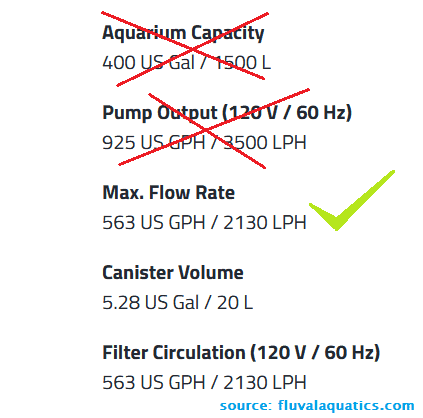
So, after doing some more research and having done quite a few tests myself something became very clear to me:
This reduction in “real” GPH is basically why the formula from above is the way it is.
We, in the hobby, found out that, on average, aiming for a water turnover of at least 5 times per hour is practically enough for an aquarium filter to do its job.
2. More creatures in the tank means the system needs more GPH.
The larger the fish you keep, the more waste they will produce. Waste is dangerous because it can quickly turn into ammonia which is highly toxic to fish.
The more media a canister filter can hold – the better it is at preventing deadly ammonia spikes in the aquarium water.
However, the aquarium water needs to be pushed through the filter media quickly enough so that the biofilter bacteria that live on the media can break down the ammonia in time.
That being said, some relatively messy aquarium fishes are:
- Large carnivorous fish such as Oscars, most South American Cichlids, Arowanas, and Stingrays;
- Herbivorous fish such as some African Cichlids, Goldfish, and any large Plecos;
- Freshwater eels (visit the link for some ideas on those);
- Aquatic turtles.
Any setup that’s decently stocked with these aquatic animals would require a water turnover of at least 6 times per hour.
What is the Best Canister Filter for the Gallon Capacity of Your Fish Tank?
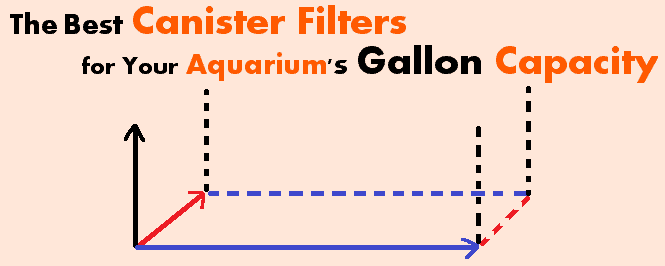
Have a quick look at this chart showing the canister filters that best match each aquarium size:
| Canister Filter Name: | For Freshwater Aquarium: | Price Bracket: |
|---|---|---|
| 1. Penn Plax Cascade Canister Filter | 30, 40, 55, and 75-gallon fish tanks | $$ |
| 2. Eheim Classic 22(XX) External Filter | 10, 15, 20, 30 breeder, 40 breeder, 50, and 55-gallon fish tanks | $$ |
| 3. SunSun HW / Polar Aurora | 40, 55, and sometimes 75-gallon fish tanks | $ |
| 4. Fluval (X)07 Aquarium Canister Filter | 20, 30, 40, 50, and up to 55-gallon fish tanks with the latter being planted | $$$ |
| 5. Fluval FX(X) Series Canister Filter | 75, 90, 100, and even understocked 125-gallon fish tanks with plants | $$$$ |
| 6. Aqueon QuietFlow 400 Canister Filter | 55, 75, 90 and up to 100-gallon fish tanks that are planted | $$$ |
Below I’ll recommend a particular piece of gear for every possible freshwater aquarium setup, according to my experience and observations.
For optimal recommendations, I am considering fish tank sizes, livestock, and aquascape, combined with the pros and cons of the particular canister filters.
In a nutshell, my reviewing process was the following:
- I followed the best known practices for flow rate in relation to a tank’s size.
- I took into consideration the livestock and adjusted my recommendations based on that too.
- I evaluated the models and their extra features and ease of use mostly from personal use.
- I evaluated each model’s durability mostly through personal experience or that of people I know in real life.
- I kept in mind each canister filter’s pros and cons during my recommendations.
- Lastly, I took into consideration what’s easily accessible for purchase online. This could obviously vary for each state or country so I did not put a lot of weight on that factor.
You can also check my detailed reviews for each filter I’m about to mention. I have personally used or know real-life examples of people who’ve had success with all of these products.
Take a look at the best canister filters for the gallon capacity of your fish tank:
1. Optimal Canister Filters for 125-Gallon or Larger Fish Tanks (473 Liters)
In a 125-gallon fish tank, the filter is the most important piece of gear along with the lighting fixtures. I’ve tested a few options for this tank size myself and came to some solid conclusions. These canister filters are your best bet to keep a 125-gallon fish tank clean:
- Fluval FX6 – Use this canister filter as a main filtration in the tank. Check the FX6 on Amazon;
- Penn Plax Cascade 1500 – To be used as a supplementary filtration in the same tank. Compare the this filter’s price at Chewy and Amazon.
There’s no easy way around this.
In my experience, to keep such a large fish tank realistically clean you’d need 2 separate canister filters:
The combined GPH rating of your canister filters should be around 1000 GPH for a 125-gallon aquarium. Circulating the water 7 to 8 times per hour in such large tanks makes sense. Spacious filter media, livestock, and decor interfere with the advertised flow rate of the filters more than usual.
Anyway, my success has been with combining one quality canister filter as the main source of water circulation and a cheaper one, to make up for the additional filtration.
Of course, the turnover rate also depends on your livestock. If you plan to have a heavily planted 125-gallon tank with just some cardinal tetras in it a single FX6 unit may suffice.
However, my guess is that you would like to have at least 3 medium to large-sized fish in such one tank.
Or maybe you’ll stock it with all the cichlids you could find. Or have some mean turtle(s) that will double in size in the next couple of months. Or, perhaps, a silly 30″ long freshwater eel.
…All of these creatures produce copious amounts of waste and need killer filtration to thrive.
On my 125-gallon tank where I’m housing my huge Oscars, I run a Fluval FX6 alongside a Penn Plax Cascade 1500 (linked to both in the bullet section above).
The FX6 has 560 GPH and the Penn Plax has 350 while both are bulky and provide enough bed for beneficial nitrifying bacteria.
The combined GPH of these two is a little over 900, which circulates the whole water volume of my aquarium more than 7 times per hour.
The water in that 125-gallon tank is as transparent as air and the ammonia and nitrite readings are solid zeroes.
If you’re lower on the budget you can replace the Cascade 1500 with, the way cheaper, SunSun/Polar Aurora which is half the price but still provides almost as strong filtration.
The SunSun HW-304B / Polar Aurora 525 is listed as a canister filter capable of 525 GPH. However, it is not clear if that’s the pump output or the water circulation potential of the whole filter.
In my observations and measurements, the real number leans towards 300 GPH without any media.
Anyway, in the long run, the Cascade 1500 will likely turn out more durable than the Polar Aurora, though it (too) has the appearance of a cheaper filter at first sight.
Mind that you get what you pay for.
These canister filters can go strong, but may occasionally break and should not be your permanent solution.
Investing in a high-end filter will save you tons of anxiety in the long run.
It’s how you should view it – as an investment.
It’s the reason why I got the FX6 and, perhaps, so should you WHEN you can afford it.
If you have the pocket for it, this canister filter is a no-brainer. The motor of the Fluval is among the best on the market. It is also quite long-lasting and the chance of breaking is rather insignificant.
Though a sole unit like the FX6 won’t be enough for a 125-gallon aquarium with my setup, it still handles a great portion of the filtration for me.
In my opinion, the FX6 is a must for an aquarium of this size, but you can get flexible with your second unit.
If you want to go full Fluval you can use their 407 Series (you can look that one up on Amazon) as your secondary filtration and benefit from its circulation potential of 245 US gallons per hour.
If you want to approach the matter in a frugal way you can buy a used 407 on Amazon and save at least half of the price. If you choose to walk that path, know that Amazon has a solid protection policy to ensure you get quality second-hand equipment.
The Eheim 2262 is hands down the best aquarium filter out there.
It is German-quality gear that may last you for 10 years or more.
In my opinion, none of the aforementioned canister filters beats this one.
It moves tons of water but also has an enormous filter media capacity of 4.5 gallons, which, by the way, you can’t find elsewhere. With so much filter media the stability of the Nitrogen cycle in your large aquarium is more or less guaranteed.
If you have a tank that’s over 150 gallons and you want to provide its fish with the best possible filtration, the Eheim 2262 canister filter is for you. Having twice as much space for media than any other aquarium filter is essential when you want to keep 150 gallons (or more) of aquarium water cycled.
For an aquarium that’s 200+ gallons, you will maybe need a second unit to help the Eheim with circulation. Fluval’s FX6 being a sound choice for that. That’s because, in practice, any 150-gallon or larger tank would need a total flow rate of 1000+ GPH to stay clean.
Anyhow, when it comes to filtering monster-sized fish tanks the Eheim 2262 canister filter stands undisputed, in my opinion.
2. Optimal Canister Filters for 90 and 100-Gallon Fish Tanks (341 to 379 Liters)
The best options for a canister filter on a 90 to 100-gallon tank with large fish likely are:
- Fluval FX6 – If you only have space for a single aquarium filter. Check this canister filter on Amazon by clicking here;
- SunSun / Polar Aurora 525 GPH – Get 2 of these filters as a budget alternative to the FX6. Amazon.com has the Polar Aurora version and so does Chewy.
I’m guessing that if you plan to have a 90 to 100-gallon freshwater fish tank you’ll absolutely stock it with medium to large-sized fish. Your livestock will define what canister filter you should install, really.
If it’s that rare case where you just want a lightly-to-not planted 90-gallon aquarium with hundreds of small community fish in it, then, surely, a single Cascade 1500 will do the job. It’s a popular canister filter that provides a strong flow rate of 350 GPH.
This will rotate the water in your 90-gallon community tank about 4 times per hour, which should be enough if it only houses small schooling fish such as neon tetras and zebra danios. The filter pad trays of the Cascade 1500 are not the largest out there, but they will be more than enough for such a setup.
However, the small fish setup in such a large tank is often not the case.
For a 90-gallon fish tank that’s heavily stocked with cichlids or some other medium to large fish that produce a lot of organic waste, you’d need powerful filtration. The total volume of aquarium water should be circulated at least 6 times per hour, which means that you’d likely need a canister filter that has a flow rate of about 540 GPH.
Obviously, the end result for the 100-gallon tank is almost the same: 100 gallons * 6 = 600 GPH.
*spotlight turns on* …Entering:
The Fluval FX6 (with a link above, to check this exact model on Amazon).
The FX6 is an astonishing canister filter with monstrous water turnover capacity, really.
It will circulate the water in your tank 5 to 6 times, depending on the filter media. Fluval’s FX6 external filter has an estimated GPH rate of 563 for total aquarium circulation, and a pump that has an output of 925 GPH (not the same thing). For my recommendation, I’m only interested in the overall GPH, not the pump’s. Having a flow rate of 560 GPH makes the Fluval FX6 one of, if not, the best canister filter for a fish tank that holds between 90 and 100 gallons of water.
My experience with the Fluval canister filters has been that they are reliable and work as described.
They’re very quiet when working, yet super powerful. I don’t really see any other filter suitable for a setup like this.
I don’t have 90-gallon, or 100-gallon tanks at the moment, but, as I mentioned earlier, I run an FX6 on my predatory 125-gallon one in combination with another filter.
Anyway, I’m sure you did notice the price of the filter I’m recommending.
I can mumble all day about how the numbers are justified, but I won’t bore you with that.
I reviewed the FX6 in my other article on the top canister filters and you can check that one out if you’d like (I left a link to it up in this post).
Essentially you get what you pay for, and this investment will probably last you no less than 5 years from my experience.
This filter can handle the waste of pretty much anyone – aquatic turtles, large fish, or both.
What I also like about it is that it has enormous space for filter media. I make sure to have a layer of filter floss in my FX6 at all times which gives my tank’s water the “clear as air” appearance.
Anyhow, the Fluval FX6 is really one of the best and most reliable big canister filters on the aquaria market.
In fact, it’s so powerful that occasionally it may suck up a baby fish or five. If you have that make sure you secure the intake pipe with a barrier of some sort. Or simply move them to a breeding tank.
Chinese-important equipment. No joke.
I’m aware of how that sounds, but it’s not as bad as you may think.
The SunSun HW-304B or its mirror – the Polar Aurora (link to Amazon above, by the way) – claim to turn over 500 gallons of water per hour. In my experience, this is not the truth, but they still realistically reach around 300 GPH.
With two of these, the total flow rate of your 90-gallon tank will be pushing 600 GPH, which is roughly 6 times of hourly water turnover, give or take.
But that’s not everything: look at Polar Aurora’s price.
That’s right, you can get two of these filters for less than the money you’d pay for a single FX6.
I can’t help but agree that for a tighter budget, the SunSun / Polar Aurora canister filters are absolutely killing the competition.
They do move around plenty of water and have 4 trays for filtration media, so there’s that.
Two units will provide crystal clear water in a well-stocked 90 or 100-gallon aquarium. The SunSun HW-304B / Polar Aurora 525 is the go-to choices for many frugal aquarists with larger fish tanks.
Anyhow, I think it’s important to mention that these filters won’t last you 5 years, and if they do, there may be some repairs along the way.
One interesting thing is, The Polar Aurora / SunSun canister filters come with a built-in UV sterilizer.
Author’s note: UV sterilizers are devices that clear micro-algae spores and some parasites from the water. Usually, you’d want to get one if you’re seeing a green tint to your tank’s water.
Anyway, I don’t recommend turning on the built-in UV sterilizer of the Polar Aurora for more than a couple of hours on the weekend. The UV bulb is strong enough to eat through the plastic if it stays on for longer than that.
You should get a separate UV aquarium sterilizer if you need one.
Anyhow, the SunSun HW-304B / Polar Aurora canister filters are a pretty good choice for a fish tank of this size if you don’t have more money to spend on equipment. However, If you do, I would always recommend going for the rock-solid Fluval FX6.
A SunSun HW-304B / Polar Aurora will last you for at least a year and a half with proper maintenance.
My honest recommendation here is to let your budget decide.
3. Optimal Canister Filters for 75-Gallon Fish Tanks (284 Liters)
Take a look at the canister filters that will best maintain a 75-gallon freshwater aquarium clean:
- Penn Plax Cascade 1500 – For tanks that are less than 80% stocked. See whether Chewy or Amazon have the best offer for this model;
- Aqueon QuietFlow 400 – For a fully stocked 75-gallon aquarium. Check this canister filter out on Amazon;
- Fluval FX4 – For a tank that’s overstocked. You can see the Fluval FX4 here.
According to my experience, to properly filter the 75 gallons of water in your fish tank you’d need a canister filter that can turn the water at least 5 times per hour. If your aquarium setup is based on predatory large fish or turtles – read messy – you’d want a water turnover of 6 to 7 times.
The Cascade 1500 would be perfect for most 75-gallon setups. It has a flow rate of 350 GPH which can be enough for a decent water circulation – a turnover of 4.7 times per hour.
I recommend this filter if you are not stocking your freshwater 75-gallon fish tank to the fullest and if you keep a few aquatic plants inside.
I use the Cascade 1500 on my heavily planted 75-gallon aquarium that harbors small community fish.
I would say my tank is moderately stocked, and I am positive it is close to 80% bioload. My readings of ammonia and nitrite are well close to 0, with ammonia being constantly there and nitrites ranging between 0 and 0.2 ppm.
When dealing with a planted tank, however, you’d want enough flow to move around carbon dioxide, without tearing your plants apart. It’s why I chose the 1500 series, and I am (still) pretty happy with my choice.
Anyway, with larger fish such as Oscars, cichlids or freshwater eels things can get dirty.
Literally.
I’ve found that to actually filter the water in such cases, you’d need a stronger canister filter.
My filter recommendation for a decently stocked 75-gallon tank would be the Aqueon QuietFlow 400.
This filter is rated at a turnover of 400 gallons per hour. I have to say, that may very well be the real GPH number.
Author’s note: I only have one tank with Oscars and yet, despite the messy creatures in it, it achieves crystal clear water.
And let me tell you, with an Oscar that’s 10 inches long the filter you have is probably the most important equipment in your aquarium system at that point.
If you risk it with a smaller and weaker aquarium filter the residual ammonia in the tank may end up killing your monster fish.
Anyhow, for a 75-gallon tank with a small turtle, or one that is FULLY stocked with cichlids I’d strongly recommend stepping up your new canister filter game a little.
That being said, an appropriate choice for a messy 75-gallon tank would be the Fluval FX4 canister filter.
Aquatic turtles are as dirty as it gets, and if you’ve ever owned one you’d know that.
Fluval’s FX4 model is classified as a good canister filter for up to 250-gallon fish tanks, but this is not your concern.
What we’re looking at here is the GPH flow rate, which is 450, as advertised. This is likely enough to handle a 75-gallon tank with aquatic turtles as a turtle habitat needs a solid canister filter in place.
The Fluval FX4 also has multiple filter media trays, for you to stock with whatever pads you desire.
This will suffice for even the messiest turtle and you won’t end up tearing your tank down, because of issues with stagnant water.
4. Optimal Canister Filters for 55-Gallon Fish Tanks (208 Liters)
Take a peek at the best canister filters for 50 and 55-gallon freshwater fish tanks:
- Polar Aurora – A budget canister filter. You can find it at Amazon or at Chewy;
- Penn Plax Cascade 1500 – For heavily-stocked fish tanks. You can find this canister filter at both Chewy.com and Amazon.com;
- Fluval 407 – For an understocked 55-gallon tank. Click here to see the Fluval 407 at Amazon.
For the 55-gallon and similarly-sized tanks, I’ve estimated that you’ll likely need a canister filter that spins between 240 and 330 GPH, depending on the bioload in the fish tank.
Bigger fish tend to be messier and if I was planning to keep such I’d want to be prepared.
I can recommend that you go after either the SunSun HW-304B / Polar Aurora or the Cascade 1500 canister filter. They all provide a flow rate of over 300 GPH which should be enough to handle the water circulation in a 55-gallon fish tank perfectly.
“What’s the difference between them?” – you may ask.
When I’m getting a Polar Aurora I know that it will come at a lower price and that I will get really powerful aquarium filtration for my bucks.
The Cascade 1500 canister filter is a little bit pricier, but it’s manufactured in the US and will run for 3 or more years upon good maintenance. It is also stronger on the flow rate than the Polar Aurora with 350 GPH compared to around 300 for the latter.
Note that the Polar Aurora claims to provide a flow rate of 525 GPH but I’ve found that isn’t true. The realistic water turnover would be around 300 GPH, give or take 20 GPH.
Anyway, if you’d want to stock your 55-gallon aquarium heavily, the choice really depends on your budget.
Obviously, if you really can’t afford to spend the extra cash then go for the Polar Aurora. By the time a change is needed (still, 1 to 2 years) you’d probably have enough money to get something durable.
However, if you have the budget for it – you should absolutely go for the Cascade 1500, as it is way worth it in the long run.
It’s simple – let your pocket decide.
These canister filters have tons of positive reviews, and that’s not only on Amazon but just about any online aquarium community ever.
It’s an awesome purchase if you’re tight on budget and MANY fish keepers will back me up here. These filters also have a very powerful turnover potential.
Anyhow, in case you plan to keep something very messy such as larger pleco fish, Oscars, a community of cichlids, or some freshwater eels I recommend stepping up your game, for obvious reasons.
When keeping medium-sized fish or turtles in your 55-gallon tank you should aim for ~350 gallons per hour of water turnover.
I used to run such a fish tank (I expanded it) and I had a Cascade 1500 doing the filtration. This canister filter was top-notch and kept my tank’s ammonia where it belongs – at 0.
Basically, I ended up with mine because with these types of fish in my aquarium I wasn’t sure if I could compromise with the filtration.
But what canister filter would work best in a heavily planted 55-gallon tank with just a few schooling fish in it?
In my opinion, the Fluval 407 would be a suitable choice for this setup because it provides a flow rate of approximately 250 GPH.
With it, the effective water circulation of the aquarium sits at around 4.5 times, which is enough to move around the CO2 for your aquatic plants. This GPH rate will also have a smaller chance of sucking up the tinier fish or their fry.
The canister filter is a bit pricey itself but I am only trying to recommend units that do the best work for their price here.
So the Fluval 407 would also make sense for a 55-gallon planted tank with A LOT of fish that swim in schools.
You can read my reviews about all of the units I mention in my article on the top-rated canister filters that I linked to, up in this article.
5. Optimal Canister Filters for 30 to 40-Gallon Fish Tanks (114 to 151 Liters)
A sound choice for a canister filter for 30 and 40-gallon fish tanks would be the Penn Plax Cascade 700 Series. The Cascade 700 has a flow rate of 185 GPH. This makes it ideal for your 30-gallon fish tank since it will turn its water around 6 times per hour and over 4 times for a 40-gallon one.
You can check for the Cascade 700 Canister filter over at Chewy or Amazon and find the best current deal.
Anyway, I consider the Cascade 700 strong enough to handle the filtration of a fully stocked 30-gallon aquarium.
However, if you’re not pushing it with the bioload, a simple Cascade 500 would do the job.
The Penn Plax Cascade 500 has a GPH of 115, which will turn the water nearly 4 times per hour.
I own 2 of the higher-rated Cascade series and all I can say is that these canister filters are pretty much a gold mine.
In fact, from what I’ve seen, they’re the most common canister filter of choice, and I consider that a result of reason.
Also, the price is more than affordable, as far as these quality filters go.
Anyway, if you’d like to benefit from additional bells and whistles, you can go for the Fluval 207 Series instead of the Penn Plax.
The Fluval 207 will provide your 30-gallon fish tank with pretty much the same GPH rate, but has its own advantages. You can check my thoughts about this unit in my review post about canister filters, which I linked to earlier in this article.
Moving on to my recommendation for a 40-gallon aquarium that’s crowded with residents:
My experience has been that the Fluval 407 would be able to handle a 40-gallon tank that’s decently stocked with fish.
The Fluval 407 Performance Canister Filter has a solid flow rate of 245 GPH, which is likely enough to handle a very overstocked 40-gallon Breeder tank.
The usual 40-gallon aquarium setups are heavily planted and house plenty of community freshwater fish.
With the Fluval 407 and some decent filter media, you can keep whatever you want in your 40-gallon tank.
And, trust me, you’ll end up with an overstocked community tank one day. Especially, if you’re into super colorful fish because there are many of those.
6. Optimal Canister Filters for 20-Gallon Fish Tanks (76 Liters)
Here’s what canister filter you can try when it comes to 20-gallon freshwater aquariums:
For filtering 20 gallons of aquarium water I’d go with either an Eheim 2215 Canister Filter or a Fluval 107. With these canister filters, you’d get a water turnover of about 5 times per hour for your fish tank. This is more than enough to keep smaller aquariums debris-free.
The Eheim 2215 can be found on both Chewy.com and Amazon.com and you can choose the best offer from the two.
Eheim is a big brand in the fish-keeping gear industry for a reason. From what I’ve seen (and owned) it is not uncommon that a filter of theirs would run for 7+ years.
Another quality of Eheim’s canister filters that I like is how much media they can hold.
They have plenty of room to house beneficial bacteria which is essential for a stable biofilter in the aquarium.
This makes Eheim ideal for smaller fish tanks – they don’t have a lot of flow to disturb the small swimmers while keeping ammonia and nitrite spikes at bay, thanks to their large filter media trays.
In smaller tanks of 10 to 20 gallons this is very important, especially when you’re adding new fish.
Add too many new fish at once and the organic waste produced will surely overwhelm the ammonia-converting bacteria.
From there the fish tank can get ammonia poisoning which is known to be quite deadly to aquarium fish. If not that you will get a nitrite spike, which can also be lethal, especially to freshwater species of fish.
Because of this and my bitter experience as a young fishkeeper, I recommend a filter that’s actually rated for up to 40 US gallons.
Author’s note: You can also add beneficial bacteria supplements to your aquarium when adding new fish. This way you’re “seeding” the tank and making sure the bacterial colonies establish faster.
Anyhow, both the Fluval 107 and the Eheim 2215 can maintain a similar flow rate of about 95 GPH. The guys from Fluval are rather transparent about the data, but Eheim doesn’t really disclose the number.
What I did to calculate Eheim’s GPH rates was to compare their pump output (which they publicly disclose) to other filters with similar pumps, structure, and volume of the media trays.
Anyway, for 20-gallon aquariums that are heavy on livestock, the water turnover will be significantly slowed down. Add the filtration media to that and the flow can be reduced by a third or more.
If you’d like to overstock your 20-gallon aquarium, I’d recommend going for Fluval’s 207 Series Canister Filter.
The 207 has an hourly turnover rate of about 120 gallons, which will keep your heavily stocked 20-gallon tank in check by circulating its aquarium water volume 6 times each hour.
What I enjoy the most about Fluval’s canister filters is that, aside from their consistent flow rate, they also come with a plethora of added bells and whistles and are really easy to maintain and operate.
Note that for a 20-gallon aquarium that’s long, I recommend getting a spray bar for the return outlet of your canister filter of choice.
As these water tanks are notably shorter in height your fish will have less space to swim up and down.
Also, if you’re planning to keep long-finned fish such as black skirt tetras, betta fish, pygmy goldfish, etc. you should definitely get a spray bar for the filter’s outlet.
In my experience, a spray bar will reduce the pressure under which the water is being returned to the aquarium.
That way the incoming water flow won’t disturb the swimming of long-finned aquarium fish.
If you only keep community fish that like to dash back and forth such as Danios, a spray bar would not be needed as they will enjoy the stream.
7. Optimal Canister Filters for 10-Gallon Fish Tanks (38 Liters)
In my personal experience, the best canister filter for a 10-gallon fish tank is the Eheim 2211 Classic. This filter will turn 10 gallons of water about 5 times per hour. Such flow rate will keep the small fish tank free of debris and other free-floating particles.
I have estimated that the Eheim 2211 has a flow rate of about 45 GPH, which is not to be confused with its pump output GPH.
I did this calculation myself because Eheim only disclosed the pump output rates of their canister filters.
Anyway, with lightly stocked 10-gallon aquariums, a canister filter is not necessary. Your aquarium fish will likely do just fine with a sponge or HOB filter (link to see an excellent one on Amazon).
Suggested to read next: Fish Stocking Ideas for a 10-Gallon Freshwater Tank
The pros of a canister filter for such a small fish tank are that it will provide awesome filtration while being visually hidden and especially quiet.
I would say that a good reason to go for a canister filter here would be if the aquarium sits in your or your children’s bedroom.
It’s important to remember that a small aquarium will get dirtier way faster, because of the confined space. As dangerous ammonia can build up pretty quickly in such a small volume of water, proper filtration is of utmost importance.
In my observations, most smaller fish tanks end up overstocked.
For this reason, you should, as with all aquarium filters, aim for a canister one that’s rated for a larger aquarium, hence my recommendation for the Eheim 2211.
That being said, for a heavily overstocked 10-gallon fish tank that houses a lot of “dirtier” fish such as some small plecos or pygmy goldfish, the proper canister filter would be:
The Eheim 2213.
You can easily order this canister filter online at either Chewy.com or over at Amazon.
It’s what I can certainly recommend in this situation.
This filter is rated for up to 66 US gallons. This rating is based on an empty unit with no filter pads, running on an aquarium with nothing but water in it.
Filter media, how often you clean the canister, and the aquarium decor all impede the flow rate of a filter.
Still, the Eheim canister filters are, in my observations, absolutely perfect for fish tanks with a volume of 10 to 15 gallons.
The units run quietly, do not blow your smaller aquarium fish and plants around, and provide outstanding filtration.
Anyway, here are some pieces of advice on these filters, that I must mention:
Don’t use the fine water-polishing pad that comes with the EHEIM filter. It will surely make your water crystal clear in less than a day, but you’d have to clean it 2 times a week and, trust me, that’s a LOT of work.
I would just double the coarse filter media instead.
Another thing that I should mention here is the instructions for setting an Eheim filter up and priming it. As harsh as it might sound, the instructions are complete garbage. Worry not though.
Enter: the Internet.
There are hundreds of people who have already installed and primed that filter and they also know how to best operate it and set it up.
You can easily find a video of one such person who shows you how to start and prime the unit.
Finally, I want to mention something about the INCOMING water flow. In a smaller fish tank, the fish can be more sensitive to the current. To avoid issues you have 2 really simple solutions:
- Drill small holes in the output pipe to spread the stream of returning water. Making 3-4 holes will be more than enough;
- Adjust the return pipe to point towards the back glass of your tank. This will soften the return flow.
Anyway, these are the best possible canister filters for all aquarium tank volumes.
Let me know in the comment section what you ended up with, or simply ask a question.
FAQs
How big do you need to go?
In terms of filtering media capacity there’s no hard limit on how much your filter should hold. You can’t go wrong with having more filter media. The canister filter with the largest media capacity is the Eheim 2262 as it can hold 4.5 gallons of media.
Is a canister one better than the other types for an aquarium?
Canister filters are the best type of aquarium filter because they hold the most media and are the most powerful. The only instance you should use a sponge or a HOB filter is in very small tanks with small fish. In these cases, the smaller fish could get pushed around by the stronger water current a canister would produce. But any tank that holds 10 or more gallons of water will benefit greatly from a canister filter.
How to choose the best one for your fish tank?
How to choose the best one for your fish tank?
The best canister filter for your fish tank is the one that can turn over the whole volume of water inside about 6 times per hour. For this reason, the answer depends on how large your fish tank is and how powerful the canister filter’s pump is. Aside from that you should look for a filter that has a sturdy build because these will last the most.
What is the easiest one to clean and maintain?
Generally speaking, bigger canister filters are easier to maintain than smaller ones. That’s because a big canister filter gets clogged rarely and only needs cleaning every couple of months. Smaller filters will need frequent maintenance and washing of their media, which overall consumes more time.

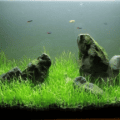
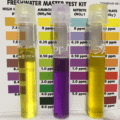
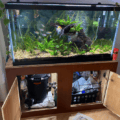

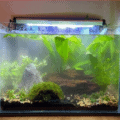
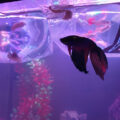
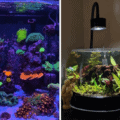
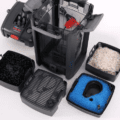


20 thoughts on “The Best Canister Filters for Each Gallon Tank Capacity (2024)”